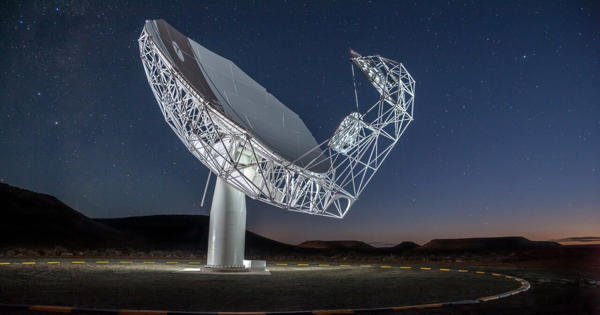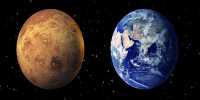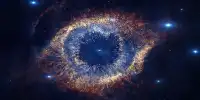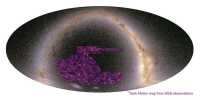An astronomical radio source is a space object that emits powerful radio waves. Radio emission can be caused by a wide range of factors. Such objects are among the universe’s most extreme and energetic physical processes. Astronomers have discovered a new extragalactic odd radio circle using the Australian Square Kilometre Array Pathfinder (ASKAP) (ORC). The newly discovered radio source, known as ORC J0102–2450, has a diameter of nearly one million light-years. The discovery is detailed in a paper published on arXiv.org.
ORCs are very large mysterious objects that are highly circular and bright along the edges at radio wavelengths. ORCs are visible at radio wavelengths but not visible at visible, infrared, or X-ray wavelengths. Because only a few of these objects have been identified thus far, very little is known about their origin and nature.
Now, a team of astronomers led by Bärbel S. Koribalski of the Australia Telescope National Facility reports the newest addition to the shortlist of known odd radio circles—ORC J0102–2450. The discovery was made as part of the search for ORCs and other extended radio sources in a deep (about 40 deg2) ASKAP field centered near the starburst galaxy NGC 253.
The discovery of a giant, ghostly circle in extragalactic space is bringing us closer to understanding what these mysterious structures actually are.
“We present the discovery of another odd radio circle (ORC) at 944 MHz using the Australian Square Kilometre Array Pathfinder (ASKAP”),” the researchers wrote in their paper.
The newly discovered ORC has a radio ring diameter of about 70 arcseconds, which equates to 978,000 light-years. The total radio flux of the source was estimated to be 3.9 mJy, while the total radio luminosity was estimated to be 140 billion TW/Hz. The object is most likely associated with the DES J010224.33–245039.5 central elliptical galaxy.
The astronomers draw some conclusions about the origin of this ORC based on the overall radio morphology of ORC J0102–2450 and the lack of detection of ring emission at non-radio wavelengths. They believe it could be a relic lobe of a giant radio galaxy seen end-on, or a massive blast wave, possibly from a binary supermassive black hole merger, resulting in such a large radio ring. The authors of the paper consider a third possibility: radio galaxy and intergalactic medium (IGM) interactions. However, the researchers added that more ORC discoveries using ASKAP and other telescopes are required to validate the proposed hypotheses.
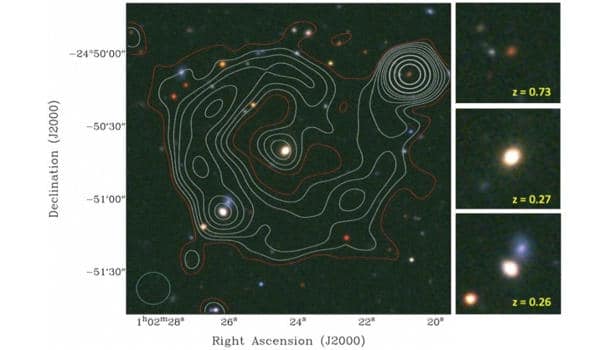
“We encourage the search for additional ORCs in radio surveys in order to investigate their properties and origin (…) Given the steep spectral index of known ORCs, low-frequency LOFAR surveys at high resolution (6”) will be of particular interest (see Shimwell et al. 2019). Deep X-ray observations may also detect these energetic events, as Tamhane et al. (2015) demonstrated in the case of a giant relic radio galaxy “The paper states.
The astronomers concluded that ORC J0102–2450 with ASKAP is the third odd radio circle with an elliptical galaxy at its geometrical center. They believe it is not a coincidence and that ORCs with such galaxies are common, which could help us better understand how these sources form.
Although the sample size is still extremely small, and we can’t say anything for certain just yet, the discovery of ORC J0102-2450 points to some promising future observation and analysis directions. If we can find even more ORCs, astronomers will be able to determine how common they are and find more similarities between them, which will help narrow down their potential formation mechanisms. Low-frequency radio and X-ray observations will be particularly interesting, they say.
“Further ORCs discovered in the rapidly growing amount of wide-field radio continuum data from ASKAP and other telescopes will show if the above scenarios have any merit, contributing to exciting times in astronomy,” the team wrote in their paper.
